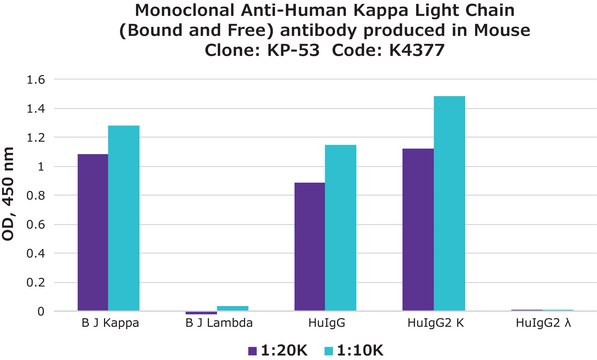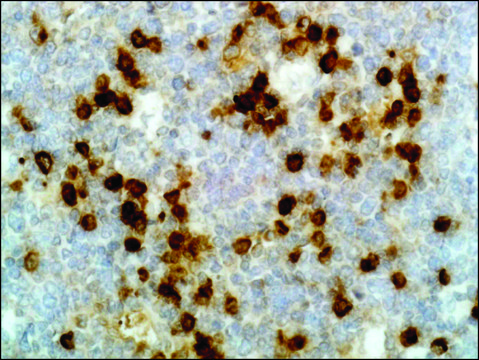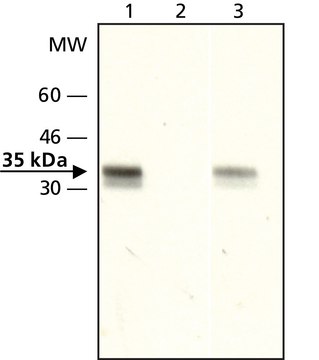L6522
Monoclonal Anti-Human Lambda Light Chains (Bound and Free) antibody produced in mouse
clone HP-6054, ascites fluid
Synonym(s):
Monoclonal Anti-Human Lambda Light Chains (Bound and Free)
About This Item
Recommended Products
biological source
mouse
Quality Level
conjugate
unconjugated
antibody form
ascites fluid
antibody product type
secondary antibodies
clone
HP-6054, monoclonal
contains
15 mM sodium azide
technique(s)
immunohistochemistry: suitable
immunoprecipitation (IP): suitable
indirect ELISA: 1:1,000 using using 2 μg/ml of human IgG myeloma containing lambda light chains as the coating protein
radioimmunoassay: suitable
western blot: suitable
isotype
IgG2a
shipped in
dry ice
Looking for similar products? Visit Product Comparison Guide
Related Categories
1 of 4
This Item | H7789 | H0164 | SAB4501366 |
|---|---|---|---|
| conjugate unconjugated | conjugate unconjugated | conjugate unconjugated | conjugate unconjugated |
| Quality Level 200 | Quality Level 200 | Quality Level 200 | Quality Level 100 |
| biological source rabbit | biological source rabbit | biological source rabbit | biological source rabbit |
| antibody form affinity isolated antibody | antibody form affinity isolated antibody | antibody form IgG fraction of antiserum | antibody form affinity isolated antibody |
| UniProt accession no. | UniProt accession no. | UniProt accession no. | UniProt accession no. |
| form buffered aqueous solution | form buffered aqueous solution | form buffered aqueous solution | form buffered aqueous solution |
General description
Specificity
Immunogen
Application
- in immunohistochemistry
- in enzyme-linked immunosorbent assay (ELISA) assay
- in immunohistology
- in radioimmunoassay (RIA)
- in precipitation assays
- in immunoblotting
- as capture antibodies in quantitative ELISA[1]
Biochem/physiol Actions
Disclaimer
Not finding the right product?
Try our Product Selector Tool.
Storage Class
10 - Combustible liquids
wgk_germany
WGK 3
flash_point_f
Not applicable
flash_point_c
Not applicable
Choose from one of the most recent versions:
Already Own This Product?
Find documentation for the products that you have recently purchased in the Document Library.
Our team of scientists has experience in all areas of research including Life Science, Material Science, Chemical Synthesis, Chromatography, Analytical and many others.
Contact Technical Service












